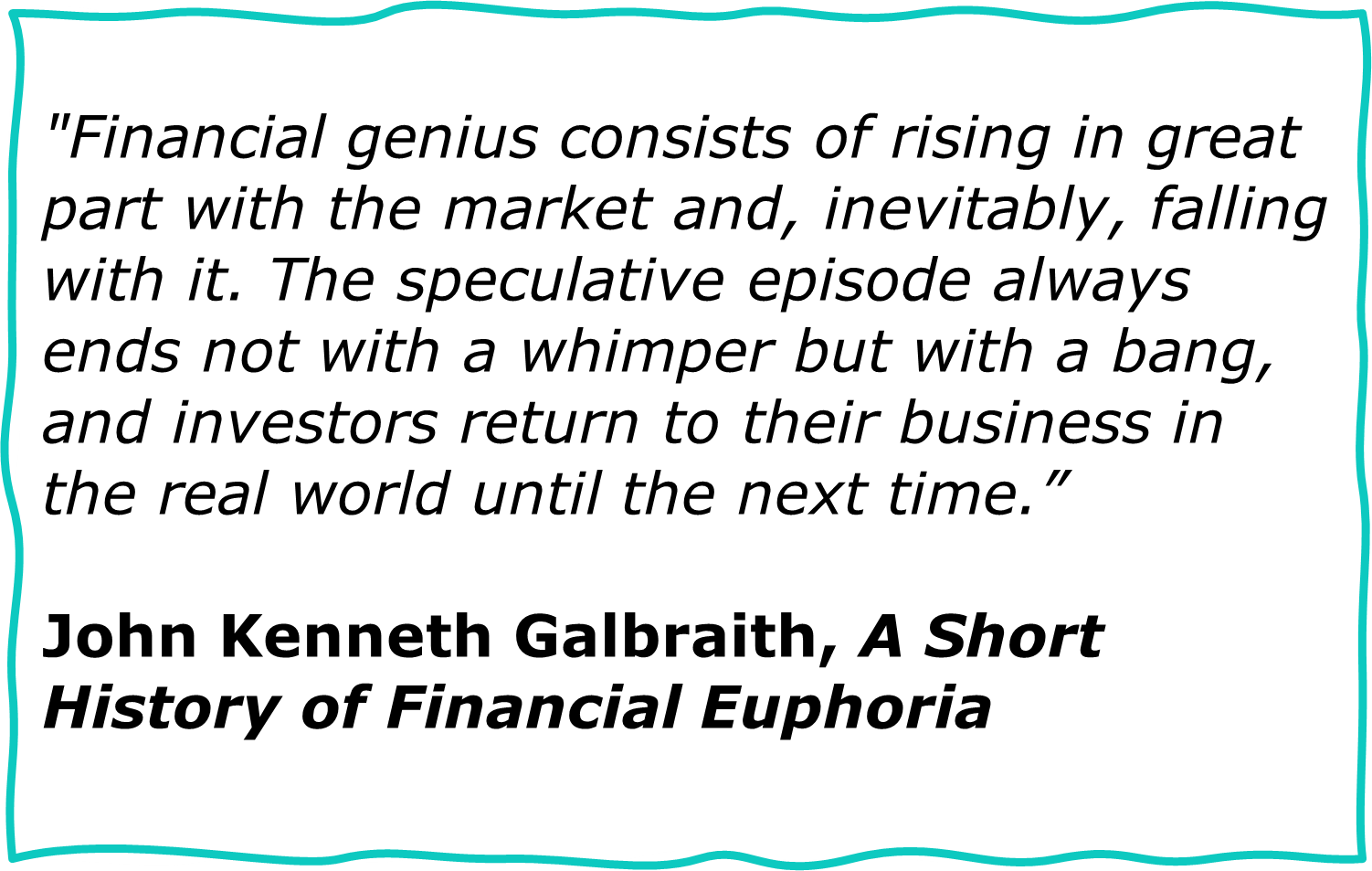
We begin this week on bubble watch, then swing the spotlight to the potential for exciting upside.
Investments into artificial intelligence (AI) accounted for at least 40% of US economic growth this year, and the excitement spilled over to US consumer spending. Except it’s all a bit one-sided. The richest 10% of Americans own 85% of the US stock market, and this cohort, enriched by the equity market bubble, account for half of consumer spending.
This is a problem. According to JP Morgan via the FT “a basket of 30 AI-connected stocks now account for 43% of the S&P 500… The increase in the value of these stocks provided US households with $5 trillion in extra wealth over the last year.”
Without that $5 trillion the weakness of the US economy would be laid bare. It is not a stretch to say that the strength of the US economy is dependent on the AI bubble continuing uninterrupted.
Yet this bubble’s endurance demands a flawlessness which the world rarely delivers, whether at an economic or market level, and particularly with new technology.
According to FT research, ten loss-making AI start-ups, such as OpenAI, have a collective value of $1trillion. “Few of these entities expect to turn a profit anytime soon”, according to Gillian Tett. Even the insiders believe this is a disaster waiting to happen…
“We’re in a bubble and a lot of people will lose a lot of money” says OpenAI’s chairman Bret Taylor.
My (educated?) guess is that a very large proportion of these quoted and unquoted businesses will either go bust or will not generate sufficient profits quickly enough for investors to escape the wrath of the bubble bursting. To cut a long story short, there will be a small number of winners, and a larger number of losers.
At the other end of the scale are Chinese equities, where we appear to be at the early stage of a break upwards out of 18 years of torpor, moving down and sideways. A trade war is the biggest immediate obstacle to more rapid progress. Is such a trade war likely?
For all the public spats between China and the US in the last two weeks, talks have continued behind closed doors, and Trump knows he must strike a trade deal. Without rare earths from China a significant chunk of US manufacturing would grind to a halt in short order. US military productions relies on these ingredients – which is why talk of the US going to war with China over Taiwan, with US weapons dependent on Chinese imports, is nonsense. China is also the sole supplier of many chemicals which are vital in US pharmaceuticals – nearly 700 drugs to be precise.
If China and the US can reach an understanding on trade, it will add a strand of much needed stability to the global economy and financial markets (accepting the dark cloud of vulnerability over the US financial infrastructure).
This détente would also add fuel to the potential for a Chinese stock market lift-off, which in coming days could be further boosted by news on China’s Five Year Plan, due to start in 2026. The advances are already very clear on the ground, as one fund manager vividly set out this week after a field trip:
“We had lunch delivered by drone in Shenzhen’s city center, zipped across Beijing suburbs in silent robotaxis, and toured factories where humanoid robots work shifts beside their human counterparts”
These are not experiments or sci-fi. This is happening now.
Looking elsewhere for potential, prospects for the UK continue to be trashed in the press, which I am still inclined to regard as a positive contra-cyclical indicator, and I note that the UK stock market has outperformed the US in the last month. Next week we will dig deeper and see which UK funds are leading these moves, and why.
Other than oil, up 7% on new sanctions, commodities mostly had a poor week, with gold miners, silver, platinum down 5-9%, and physical gold off by 3%. There have been very sharp daily moves. Ordinarily we would call this a period of distribution, when an asset moves from strong hands, who’ve made their money, to weak hands, the latecomers, you often get this daily volatility. In Elliott Wave terms it is the wave 4, a period of hesitation before a final rally to a significant peak…
…But that is with mainstream equities. In contrast, commodities are much more likely to fall very sharply, without the prior neat warning of a wave 4 shape. Be careful.
Turning to stock markets generally, over the last week a broad selection of markets made progress, with China, UK, and Brazil all up by 2% or more. There were no obvious casualties.
This period of relative calm, but for commodities, might be a good time to make sure your portfolio is in good shape. For example:
· Do you have a clear stop-loss strategy?
· Have you increased your stops with the share or fund price?
· Have you too many individual holdings? e.g. a maximum of 15 is a decent guide.
· Have you applied “the overnight test”? i.e. if you had mistakenly sold fund x yesterday, would you buy it back today?
Please do keep your thoughts and feedback coming, whether by email or in the Facebook group. We all love to hear from you.